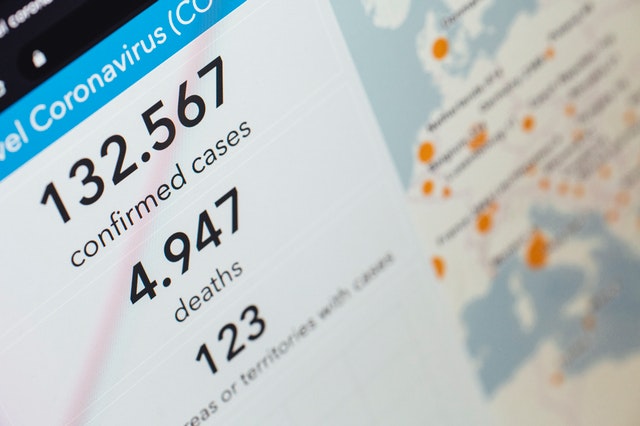DOL Provides New Guidance Regarding Inspections During Coronavirus Pandemic

The U.S. Department of Labor released OSHA’s Interim Enforcement Response Plan providing guidance to Employers and workers on how OSHA will conduct inspections and also providing direction to the agency and Compliance Safety and Health Officers (CSHOs) in handling COVID-19 complaints, referrals and severe illness reports. According to the DOL memo the response plan takes effect immediately and will stay in place “until further notice,” the intention is for it to be “time-limited” to the current emergency public health crisis.
Summary
I. General Enforcement Guidance:
(a.) OSHA is to investigate complaints, referrals, and employer-reported fatalities and hospitalizations to identify potentially hazardous occupational exposure to confirm that employers have taken prompt actions to mitigate hazards and protect employees. An Employer must report a fatality within 8 hours of the event and 24 hours for an inpatient hospitalization, amputation or loss of an eye. Additionally, an Employer must report a fatality if it occurs within 30 days of a work-related incident.
(b.) If an Area Director determines that an on-site inspection is necessary, the CSHO will carefully evaluate potential hazards and limit any possible exposure(s). During these inspections, the Area Director is to maximize the use of electronic means of communication (remote video surveillance, phone interviews, email correspondences, facsimiles and email transmittals of documents, video conferences, etc.)
II. Specific Guidance for COVID-19 Enforcement:
Workplace Risk Levels:
OSHA guidance sets forth risk levels in a workplace setting to prioritize enforcement activities during the COVID-19 pandemic.
(a.) High and very high exposure risk jobs include, but not limited to, hospitals treating suspected and/or confirmed COVID-19 patients, nursing homes, emergency medical centers, emergency response facilities, settings where home care or hospice care are provided, settings that handle human remains, biomedical laboratories, including chemical laboratories, and medical transport.
(b.) Medium exposure risk jobs include those with frequent and/or close contact with, i.e. within 6 feet of people who may be (but not known to be) infected, but not limited to, those who have contact with the general public (e.g., in school, high-populated-density work environments, and some high-volume retail settings.)
(c.) Lower exposure risk jobs include those that do not require contact with people known to be, or suspected of being, infected with COVID-19 nor frequent close contact with, i.e., within 6 feet of the general public (those who have minimum occupational contact with the public and other co-workers.)
Facilities and imminent danger exposures related to COVID-19 will be prioritized for inspections, with particular attention given to healthcare organizations and first responders. Depending on the severity of the complaint these types of exposures may warrant an on-site inspection considering all relevant factors. All other formal complaints alleging SARS-CoV-2 exposure, in which employees are participating in medium or lower exposure risk tasks will not normally require an on-site inspection. Employer-reported hospitalizations are to be handled using Rapid Response Investigation (RRI) in most cases.
III. Inspection
(1) Opening Conference:
If an informal inspection can be accomplished without accessing a location of suspected or confirmed COVID-19 exposure, then all possible steps must be taken for the CSHO to avoid exposure (i.e. telephone opening conference) and interview the infection control director, safety director, and/or health professional responsible for OSHA hazard control.
(2) Document Review:
The CSHO is to conduct a review of relevant records electronically or remotely (e.g. via phone or online) before attempting a walkaround inspection. Information that is to be collected includes:
- The Employer’s written pandemic plan as recommended by the CDC.
- The Employer’s procedure for hazard assessment and protocols for PPE use for suspected or confirmed COVID-19 patients.
- Whether the workplace has handled specimens or evaluated, cared for, or treated suspected or confirmed COVID-19 patients.
- Review medical records related to the worker’s exposure incident.
- Review the respiratory protection program and any modified respirator policies related to COVID-19.
- Review employee training records.
- Review documentation of provisions made by the Employer to obtain and provide appropriate and adequate supplies of PPE.
- Whether that facility has airborne infection isolation rooms/areas.
IV. Enforcement of OSHA’s General Duty Clause
An Employer can be held to be in violation of OSHA’s General Duty Clause if:
- The Employees failed to keep the workplace free of a hazard to which employees of that employer were exposed.
- The hazard was recognized.
- The hazard was causing or was likely to cause death or serious physical harm, and
- There was a feasible and useful method to correct the hazard.
Since March 1, OSHA has handled 1,819 virus-related complaints, 52 employer-reported cases, and 19 referrals from other sources. Additionally, there have been 386 whistleblower complaints filed with OSHA claiming to have been retaliated for pointing out problems with the Employer’s coronavirus health precautions.
Pittsburgh Labor and Employment Attorneys
Frank Botta advises companies in a wide variety of labor and employment matters. Please contact Frank at (724) 776-8000 or fbotta@lynchlaw-group.com with your questions and concerns about the impact of COVID-19 on your business.




